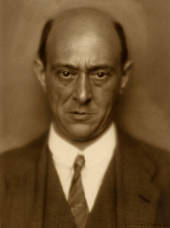

Arnold Schönberg
Lied der Waldtaube
Short instrumentation: 8 5 7 5 - 10 4 6 1 - timp, perc, hp(4), bass tpt(Eb), str
Duration: 13'
Übersetzer: Robert Franz Arnold
Klavierauszug von: Alban Berg
Instrumentation details:
1st piccolo
2nd piccolo
3rd piccolo
4th piccolo
1st flute
2nd flute
3rd flute
4th flute
1st oboe
2nd oboe
3rd oboe
1st cor anglais
2nd cor anglais
1st Klarinette in Es
2nd Klarinette in Es
1st clarinet in A
2nd clarinet in A
3rd clarinet in A
1st bass clarinet in A
2nd bass clarinet in A
1st bassoon
2nd bassoon
3rd bassoon
1st contrabassoon
2nd contrabassoon
1st horn in F
2nd horn in F
3rd horn in F
4th horn in F
5th horn in F
6th horn in F
7th horn in F
8th horn in F
9th horn in F
10th horn in F
1st trumpet in F
2nd trumpet in F
3rd trumpet in F
4th trumpet in F
Basstrompete in Es
alto trombone
1st tenor trombone
2nd tenor trombone
3rd tenor trombone
4th tenor trombone
Bassposaune in Es
contrabass trombone
bass tuba
timpani
percussion
1st harp
2nd harp
3rd harp
4th harp
violin I
violin II
viola
violoncello
double bass
Schönberg - Lied der Waldtaube for medium voice and orchestra
Printed/Digital
Translation, reprints and more

Arnold Schönberg
Schönberg: Lied der Waldtaube for voice and pianoOrchestration: for medium voice and piano
Type: Noten
Language: Deutsch
Audio preview
Work introduction
The Song of the Wood-Dove closes part I of the Gurre-Lieder; the work was written in 1900-1911, based on the Gurresange poems by the Dane Jens Peter Jacobsen. The theme of Part I is the love-story of King Waldemar and Tove, the Wood-Dove singing in ballad-style of Tove’s death at the hands of jealous Queen Helwig, “Helwigs Falke war’s, der grausamen Gurres Taube zerriß” (“It was Helwig’s hawk who tore cruel Gurre’s dove apart”).
Motifs of reminiscence from the first nine previous songs of Part I provide the work’s structural material and another semantic layer in this section. The version for chamber orchestra seems to free the motifs from the context of their logical coherence, shifting the focus onto the motivic work of variation and combination, the short, succinct motives interweaving with the song-like element of symmetrical bar groupings. In terms of form, Schönberg thus achieves a quasi-sonata shape, in which he integrates strophe-like complexes, introduced by the recurring refrain melody, Weit flog ich, Klage sucht’ ich (“I flew afar, seeking lamentation”).
Stefanie Rauch © Arnold Schönberg Center
View the full text on the website of the Arnold Schönberg Center.
